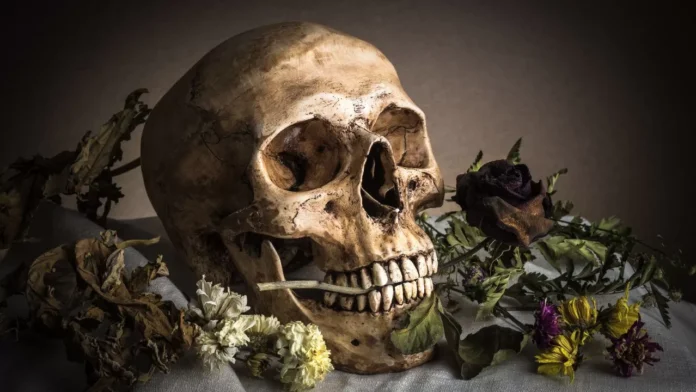Introduction
The term “skeleton” carries multiple meanings across different fields, from human anatomy to sports and even gaming. Whether referring to the skeletal system in biology, the adrenaline-pumping Skeleton sport in the Winter Olympics, or the famous skeletal characters in gaming and pop culture, the concept of a skeleton is deeply ingrained in various aspects of life. This article provides a detailed, SEO-optimized exploration of the skeleton, covering its definition, functions, features, and specifications.
What is a Skeleton?
A skeleton is a structural framework that supports an organism, providing shape, protection, and movement. In vertebrates, the skeleton is primarily composed of bones, while invertebrates may have exoskeletons or hydrostatic skeletons. The human skeleton, for example, consists of 206 bones that serve multiple functions essential for life.
Functions of the Skeleton
- Support: The skeleton provides a rigid framework for the body, allowing it to maintain its shape.
- Protection: Vital organs such as the brain, heart, and lungs are safeguarded by the skull and rib cage.
- Movement: Bones work in conjunction with muscles, tendons, and ligaments to facilitate movement.
- Mineral Storage: Bones store essential minerals such as calcium and phosphorus, which are released into the bloodstream as needed.
- Blood Cell Production: Bone marrow produces red and white blood cells necessary for oxygen transport and immune function.
- Energy Storage: Yellow bone marrow stores fat, which serves as an energy reserve.
Types of Skeletons
Skeletons can be classified into three primary categories based on their structural composition and function:
- Endoskeleton (internal skeleton, found in vertebrates like humans and animals)
- Exoskeleton (external skeleton, found in arthropods like insects and crabs)
- Hydrostatic Skeleton (fluid-filled cavities providing support, found in soft-bodied organisms like jellyfish)
The Human Skeleton: Structure and Composition
The human skeleton is divided into two major sections:
1. Axial Skeleton (80 Bones)
- Skull (22 bones)
- Vertebral column (26 bones)
- Rib cage (24 ribs and the sternum)
2. Appendicular Skeleton (126 Bones)
- Shoulder girdle (clavicles and scapulae)
- Upper limbs (humerus, radius, ulna, carpals, metacarpals, phalanges)
- Pelvic girdle (hip bones)
- Lower limbs (femur, tibia, fibula, patella, tarsals, metatarsals, phalanges)
Skeleton Specifications and Features
Below is a comprehensive table detailing the specifications and features of the human skeleton.
| Feature | Description |
|---|---|
| Total Bone Count | 206 in adults, approximately 270 in newborns |
| Longest Bone | Femur (thigh bone) |
| Smallest Bone | Stapes (ear bone) |
| Bone Density | Varies by age and health; denser in youth, decreases with age |
| Bone Marrow | Produces blood cells and stores fat |
| Joint Types | Ball-and-socket, hinge, pivot, saddle, plane, condyloid |
| Skull Function | Protects the brain and supports facial structure |
| Spine Sections | Cervical, thoracic, lumbar, sacral, coccygeal |
| Bone Composition | 70% inorganic minerals (calcium, phosphorus), 30% organic material (collagen) |
| Healing Ability | Self-repairing through osteoblast activity |
| Bone Strength | Stronger than concrete but lighter |
Skeleton in Sports: The Skeleton Race
Beyond anatomy, “Skeleton” is also a high-speed winter sport featured in the Winter Olympics. Competitors race head-first on a small sled down an icy track at speeds exceeding 80 mph.
Key Features of the Skeleton Race:
- Equipment: Small sled, aerodynamic suit, spiked shoes for grip
- Race Track: Icy course with sharp turns and high-speed straights
- Technique: Athletes push off, jump onto the sled, and steer using subtle body movements
- Safety Gear: Helmet with face shield to protect against impact
Skeleton in Popular Culture
The skeleton has a significant presence in pop culture, particularly in gaming, literature, and films. Notable examples include:
- Gaming: Skeleton enemies in RPGs like “Dark Souls” and “Minecraft”
- Movies: Iconic skeleton characters such as Jack Skellington from The Nightmare Before Christmas
- Literature: Death personified as a skeletal figure in books like Discworld by Terry Pratchett
Common Skeletal Disorders and Conditions
While the skeleton is durable, it is susceptible to various conditions, including:
- Osteoporosis: Weakening of bones due to loss of bone density
- Arthritis: Inflammation of joints causing pain and stiffness
- Fractures: Breaks in bones due to trauma or stress
- Scoliosis: Abnormal curvature of the spine
- Rickets: Softening of bones due to vitamin D deficiency
Read More:Webfreen.com Fashion: The Ultimate Destination
Maintaining a Healthy Skeleton
To ensure optimal skeletal health, consider the following tips:
- Calcium and Vitamin D Intake: Essential for bone strength and density
- Regular Exercise: Weight-bearing activities like walking and strength training improve bone health
- Proper Posture: Reduces strain on bones and joints
- Avoid Smoking and Excessive Alcohol: Both can weaken bones over time
- Regular Checkups: Monitor bone health, especially for individuals at risk of osteoporosis
Conclusion
The skeleton is a vital structure that provides support, protection, and mobility in living organisms. Whether discussing its anatomical significance, sports relevance, or cultural impact, understanding the skeleton enhances our appreciation for its role in daily life. By maintaining skeletal health through proper nutrition and exercise, we can ensure longevity and strength for years to come.
